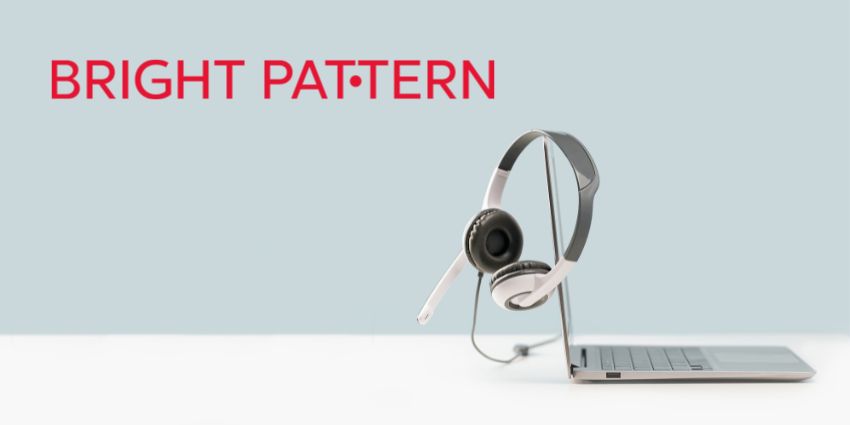As the noise around The Great Resignation dwindles, another troubling trend comes to the fore: The Great Exhaustion.
McKinsey & Company research underlines this, finding that 49 percent of employees feel at least somewhat burned out.
Lorrissa Horton, Senior Vice President and GM of Webex Calling and Contact Center, notes a critical reason:
People are hitting burnout because the separation of life and work decreased significantly.
Indeed, many have yet to move on from pandemic-induced work patterns, which blurred the boundaries of when work starts and ends.
Such a phenomenon crosses many professions, including customer service roles. After all, it is not uncommon for a manager to talk to an agent who has not left their workstation for hours, combatting a slew of back-to-back contacts.
Yet, many other possible burnout drivers exist in the contact center. Dealing with angry customers, network connection issues, measuring and monitoring cultures, understaffing, background noise, conflicting expectations… The list is boundless.
Combatting these problems starts with one essential course of action: prioritizing agent wellbeing.
To do so, think: Support, Inspire, Cultivate.
Supporting Hybrid Agents
Regular, structured check-ins are critical to support agents, keep tabs on wellbeing, and prevent burnout.
Yet, as supervisors fight fires, manage escalations, and control their workflows, such check-ins can slip under the radar. As a result, problems go undetected, and agents often become isolated.
Connecting these pain points with the possibility of burnout at the beginning of the pandemic, Webex quickly evolved its Collaboration Insights solution. This gives leaders new insights into the dynamics of their teams.
Sharing more, Horton said: “Through analytics, Webex sends managers alerts – either through chat, video, or voice – such as: You haven’t spoken to some of your agents in two weeks. It might be worth checking in.”
From here, Webex is kicking agent support up a notch. Horton continued:
Whether it’s words, pace of speech, tone, volume, audio quality, network quality, or so on, we’re looking across the board to pick up on stress-inducers, both in and out of an agent’s control.
Using these real-time insights, leaders can help teams to improve their remote environments and intervene when troubling agent performance trends emerge, offering timely assistance.
The solution also shares performance insights with employees, which help to maintain connections within the team. Indeed, agents can view each other’s strengths, learn from one another, and set goals together to improve service experiences.
Other critical pieces of the puzzle to support hybrid teams include facilitating flexible working, fostering professional development, and updating support systems. These include the knowledge base, agent desktops, and UC-enabled SME connections for real-time assistance.
Inspiring Teams with a Purpose
Lacking satisfaction from achievements. Missing the energy to perform to a high standard. Feeling disillusioned at work. These are all symptoms of burnout.
Luckily, there is an antidote to each of these poisons; a meaningful purpose.
A purpose gives agents a reason to come to work, apart from money. It connects agents to what they do and inspires them continuously deliver epic service experiences.
How can contact centers create such a purpose? Start by linking the agent role to the bigger picture, become a storyteller, and make sure agents feel like they are a central cog within the organization.
In doing so, agents understand the difference that small performance gains truly make.
After achieving this, ensure teams have a transparent view to track their performance progress. Webex Workforce Optimization software provides this, paving the way for a source of continuous inspiration and engagement.
Referencing the quality assurance solution within Webex’s WFO suite, Horton added:
With Webex you can define quality from the customer’s perspective and see how agents perform against that. With this intelligence, contact centers can spotlight pertinent, personalized performance insights and share those with the relevant team member.
Another excellent method for inspiring agents is to avoid only telling them how to do something; tell them why they should do it too and link it back to the purpose once again.
Also, express this purpose in recruitment and induction. Not only will this ensure the purpose takes hold, but it will help to integrate newcomers – which is tricky in hybrid environments.
Cultivating the Best Possible Culture
Too often, operations offer generic advice, such as “bring your whole self to work,” in a bid to build a supportive culture.
Yet, what does that look like? Leaders must demonstrate it, set routines, and pinpoint positive behaviors that help build a hybrid environment in which agents want to work.
As Mike Krzyzewski, a former American basketball coach once said:
You cannot merely expect culture to be a natural occurrence; it has to be taught and made part of your everyday routine.
Engaging regularly with agents to harness their ideas, planning gamification initiatives, and supporting causes that matter to the team – throughout the calendar year – are excellent examples of such routines.
Also, look to build multiple communication options and collaboration opportunities through group chats, video calls, and shared documents. These help to create personal connections across the contact center, which are socially sustaining and crucial to psychological wellbeing.
Moreover, some people are often unwilling to speak up over video, stilting communication and culture-building efforts. So, creating many avenues for social interaction is critical. A UCaaS integration – which is native to the Webex Contact Center – works well for this.
Finally, ensure regular communication while harnessing analytics to make a concerted effort to spot people doing good things. Recognizing and rewarding the team for doing so will refuel their desire to replicate positive behaviours, bolster wellbeing, and enhance customer experiences.
Lifting Agent Wellbeing with Webex
As the Great Exhaustion rears its ugly head, prioritizing agent wellbeing to combat burnout has never been more of a pressing issue.
Luckily, the Webex team works tirelessly to support its contact center customers to improve employee experiences, alongside customer experiences.
To discover more, visit: www.webex.com







